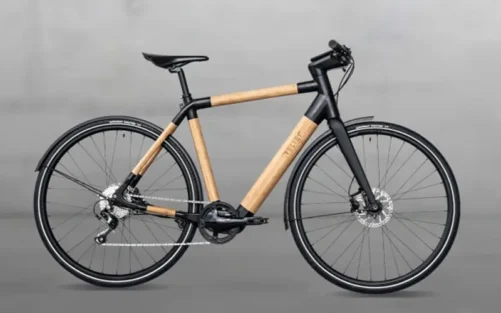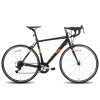Cycle Facts
E-Bike
An e-bike (electric bike) is a bicycle equipped with an electric motor that assists with pedaling. This motor provides extra power to help you ride faster or tackle challenging terrains with less effort. E-bikes have become increasingly popular for commuting, recreation, and off-road cycling, offering a more eco-friendly alternative to traditional vehicles and making cycling more accessible to a wider range of people.
Key Features of E-Bikes:
- Electric Motor:
- The motor typically provides assistance when you pedal, known as pedal assist or pedelec.
- Some e-bikes also offer a throttle that allows you to engage the motor without pedaling, though pedal assist is more common and legal in many regions.
- Battery:
- E-bikes are powered by rechargeable batteries, which are usually mounted on the frame or rear rack.
- Batteries typically offer a range between 20 to 100 miles, depending on factors such as the battery capacity, motor power, terrain, rider weight, and level of assistance used.
- Motor Power:
- Motors are usually rated between 250W and 750W, though some high-performance bikes may go beyond that.
- In many places, there are regulations on the maximum motor power, with 750W (1 horsepower) being a common upper limit for street legal e-bikes.
- Pedal Assist Levels:
- Most e-bikes allow you to adjust the level of motor assistance, which lets you choose how much power you want based on your needs or riding conditions.
- Lower assist levels are more efficient for longer rides, while higher levels help on steep hills or when you want to conserve energy.
- Brakes:
- E-bikes typically come with hydraulic disc brakes or mechanical disc brakes to provide better stopping power, especially when riding at higher speeds or on downhill sections.
- Speed:
- Most e-bikes are designed to assist you up to a certain speed limit (typically 20 mph or 28 mph depending on the regulations in your area). Once you exceed that speed, the motor cuts off and you rely entirely on pedal power.
Types of E-Bikes:
- City/Commuter E-Bikes:
- Designed for daily commuting on paved roads or bike paths.
- They are typically equipped with features like fenders, lights, and cargo racks.
- Mountain E-Bikes (E-MTBs):
- These are built for off-road trails and rough terrain, offering a combination of electric assist and high-performance suspension systems.
- E-MTBs make it easier to conquer steep hills, technical trails, and long rides in the backcountry.
- Road E-Bikes:
- Similar to traditional road bikes but with an electric motor for assistance.
- They are lighter than mountain e-bikes and designed for speed on smooth pavement.
- Folding E-Bikes:
- These e-bikes have a folding frame that makes them compact and easy to store or carry, ideal for city commuters or people with limited storage space.
- Cargo E-Bikes:
- Designed to carry heavy loads, these bikes feature reinforced frames, larger cargo areas, and often a more powerful motor to help with the extra weight.
- Fat Tire E-Bikes:
- These have oversized tires, making them ideal for riding on soft surfaces like sand, snow, or mud.
- They often come with powerful motors to tackle challenging conditions.
Advantages of E-Bikes:
- Less Effort:
- E-bikes reduce the amount of physical effort required to ride, making it easier to climb hills, ride longer distances, or overcome challenging terrain.
- Environmental Benefits:
- E-bikes are more eco-friendly than traditional vehicles because they run on electricity instead of fuel. They also generate less pollution and have a lower carbon footprint.
- Health Benefits:
- Even though they offer motor assistance, you still get a good workout, especially if you use lower assist levels or turn off the motor altogether.
- E-bikes can also help people with limited mobility or those recovering from injuries to stay active.
- Cost-Effective:
- Compared to owning and maintaining a car, e-bikes are much cheaper, both in terms of initial cost and upkeep. Charging an e-bike is much less expensive than fueling a car.
- Convenience:
- E-bikes can make commuting faster and more enjoyable, especially in areas with heavy traffic or on hills that would normally be challenging to ride up on a traditional bike.
Things to Consider Before Buying an E-Bike:
- Regulations:
- Check the local laws regarding e-bikes, as rules vary by region. Some places limit the motor’s power or set speed restrictions for e-bikes to be street-legal.
- Battery Range:
- Be mindful of how far you intend to travel and ensure the battery has enough range for your needs. Some bikes have removable batteries, allowing you to swap them out if needed.
- Weight:
- E-bikes are heavier than traditional bicycles due to the motor and battery, so you may want to consider weight if you need to carry or transport your bike.
- Cost:
- E-bikes can be more expensive than traditional bikes due to the added components, but prices vary depending on the quality of the motor, battery, and overall build.
- Maintenance:
- Like regular bikes, e-bikes require maintenance, but they also need attention to their electrical components. Regular checks on the motor, battery, and wiring are important to keep your e-bike in good condition.
Popular Brands of E-Bikes:
- Trek
- Specialized
- Rad Power Bikes
- Bosch (motor systems)
- Giant
- Haibike
- Raleigh
E-bikes provide a fun, practical, and efficient way to get around, whether you’re commuting, exercising, or exploring trails. Would you like help with choosing the right e-bike or understanding more about how they work?






